- Accueil
- Base de données
- 44
- 4 February 1941
4 February 1941
Handley Page Hampden Mk I AD750 (code ZN-?)
Pont Saint-Martin, "La Marionnière"
(contributors : Jérôme Batard (AREA), Pierre Mahé, Daniel Dahiot, Vincent Sevellec, Jean-Louis Roba, André Halbeher, Peter Burton)

Handley Page Hampden Mk I
© IWM (COL 182) - public domaine
Crew (no 106 Squadron RAF) :
- Pilot Officer (co-pilot) George Harold Frederick INNISS (service number 43036), 24 years old.
Son of Charles H. and Caroline Inniss, Barbados.
Durham University Arts Training, United Kingdom.
Plot L. Row A, Grave 15, Communal Cemetery Nantes-Pont-du-Cens


Photos with courtesy of Inniss family via Valérie Gittens
- Flying Officer (pilote) William Kelman Burr THOMAS (service number 72251), 26 years old.
Son of Alfred Ernest Thomas and Christina M.S. Burr, Glasgow, Scotland.
Plot L. Row A, joint Grave 16, Communal Cemetery Nantes-Pont-du-Cens

Photo with courtesy of Christine Buteau and Jérôme Batard (AREA Nantes)
- Sergeant (wireless operator - gunner) Frederick Arnold COLSON (service number 553425), 18 years old.
Son of Frederick Thomas and Ada Margaret Colson, Norwich, Norfolk, England.
Plot L. Row A, joint Grave 16 Communal Cemetery Nantes-Pont-du-Cens

Photo with courtesy of Nick Archer
- Sergeant (wireless operator - gunner) Jack Lewis FRANCO (service number 652586), 24 years old.
Son of Emile S. Franco, from Belvédère in France and Ada Lee from London, England.
Plot L. Row A, Grave 14, Communal Cemetery Nantes-Pont-du-Cens
PREAMBLE
By Jérôme BATARD, president AREA (Association pour la Recherche d'Epaves Aéronautiques)
My parents arrived in Pont St Martin in 1957 on the Moricière farm, located 1.5 mile from Nantes airport. During my youth, I always saw small pieces of aircrafts in a field that were found during plowing. In local memory, we were told that it was an English aircraft. The years passed until the death of grandmother Pineau. The children decided to sell the house and empty it. During this operation, a small box was found with inside a bracelet with the emblem of the Royal Air Force, a registration number and at the back of it, a dedication (For my wife Olive ), as well as a broken watch.

Photo with courtesy of Jérôme Batard (AREA)
We transmitted the number of the bracelet to England and in response, we were informed that it was a Canadian aviator named Heywood, who died in the crash of his Wellington on May 8, 1941 near Nantes. I therefore concluded that it was the aircraft whose pieces were found on the farm. Mrs. Pineau's son confirmed that the watch and the bracelet had been picked up on the ground shortly after an aircraft crash. In the Historical association of my town, we decided to investigate by going to the departmental archives to obtain additional information. We found correspondence from an English family (Read) who were looking for testimonies about the crash of a Wellington on May 8, 1941 near Nantes. An appeal in the press was launched and the response came from Mr. Poisson, living at the "Château de la Marionnière" in Pont Saint Martin. I deduced that it was not the plane that had fallen on the farm.
I began to collect different testimonies from the elders of the town. They explained to me that there had been 4 aircrafts shot down in the town. We had solved one of the crashes. The other three remained. My neighbor Gabriel Cormerais explained to me that he had been requisitioned for the STO (compulsory work service put in place by the Germans) on June 15, 1943 and that he had hidden in the Marsoire farm, owned by La Marionnière just next to La Moricière. While he was hidden, he witnessed the crash of a German aircraft without being able to give me a date, the only things he remembered ; It was a Sunday and a fire in a field had taken place at the Moricière farm. He asked me to contact Donatien Pavageau who lived in La Moricière during the war. He confirmed to me the crash and that the plane had sunk into the ground. The Germans had removed the tail of the plane and covered the remains.
At the same time, Robert Rabreau told me that on July 4, 1943, he had seen a German paratrooper who was crying. He was probably very scared. I contacted ABSA 39-45 by telling my story. Daniel Dahiot and his friends came on June 9, 2009 with their metal detector and quickly located pieces on the ground. Obviously the temptation was very strong to dig and we found the engine, the landing leg of the left wing. It was a Focke-Wulf, shot down on July 4, 1943 around noon, probably by the American Flying Fortress which crashed at Saint-Colomban the same day. At the end of this day, lots of emotions and pride for this discovery shared with the new AREA association. The decision to notify the prefecture of the discovery was made in August. A date to continue the excavation was scheduled for September 29, 2009.
Following these events, many visits to the farm were made by curious people but also by veterans. Thanks to these very interesting encounters, I had the chance to find the contact details of this Mr. Poisson whom I believed to be deceased. In fact, he lived in the southwest of France. Bernard Poisson confirmed to me the crash of May 8, 1941, but also the second crash which took place on February 4, 1941. In both cases, he went on site to recover the personal objects of the various airmen and he sent them to the English embassy after the war.
According to his memories, the first crash was a German bomber which was located near the farm in November 1940 (a Heinkel He 111, in reality in October 1940). The second crash, on February 4, 1941, was that of a Hampden. The third crash took place on May 8, 1941 (a Wellington) and the fourth crash on July 4, 1943 (a Focke Wulf 190 A).
In the 1980s, Bernard Poisson was decorated by the RAF as well as the Crown of England for his bravery. He received numerous correspondence from English families of airmen.


For his action towards the families of airmen, Father Poisson was decorated with the wings of the RAF on June 6, 1989
Photo and document with courtesy of Christine Buteau and Jérôme Batard (AREA)
The family of William Thomas Kelman Burr came to "La Marionniere" in 1946 to the site of the crash that occurred on February 4, 1941.


Alfred Ernest Thomas and Christina M.S. Burr around the cross installed by Father Poisson,
where human remains were buried after the crash.
Photos with courtesy of Christine Buteau and Jérôme Batard (AREA)

Alfred Ernest Thomas and Christina M.S. Burr surrounded by the Poisson family at "La Marionnière in 1946".
Photo with courtesy of Christine Buteau and Jérôme Batard (AREA)

With Father Bernard Poisson at "La Gaudinière" cemetery in August 1948.
Photo with courtesy of Christine Buteau and Jérôme Batard (AREA)
All this research is done to honor the memory of these young men who died in our town. The mayor agreed to make a plaque commemorating these events.
THE STORY
Night of February 4 to 5, 1941, Beeches gardening mission, St Nazaire area.
♦ Extracts from Operational Record Books of 106 Squadron of the RAF for the month of February 1941
(documents source : The National Archives)
Six aircrafts were detailed for “Gardening” operations (dropping of underwater mines) in the “Beech” area (Saint-Nazaire). Four “planted the vegetables” successfully and two of them, later, attacked the aerodrome of Château-Bougon. Two 250 lb wing bombs were seen to burst on hangars and another on a factory to the NE (Northeast) of the aerodrome. One aircraf was unsuccessfully in lack of gardening and bombing task and one (Hampden AD750, crew F/O W.K.B. Thomas, P/O G.H.F. Inniss, Sgt Franco, Sgt Colson) failed to return.
Note : the factory in the North-East must be “La Société nationale des constructions aéronautiques de l’Ouest” (SNCAO) which was a French aeronautical company.
Five Hampdens carry out their mission successfully, the sixth failed to return. The Hampden Mk I AD750, piloted by Pilot Officer George INNISS, hit by flak, crashed approximately 1.5 mile east of Château-Bougon aerodrome. A single aircraft appeared to have carried out the bombing of the terrain. In both reports, there is no mention of the Hampden AD750 crash. Presumably this bomber must have flown on the target last.
Below are the reports from the other 5 Hampdens. Only one (Sergeant WEST) mentions the possible loss of the Hampden AD750.
♦ Report from Wing Commander Patrick Jullian POLGLASE, commanding officer for the mission (see appendix)
Crew : Sgt. Wotherspoon, Sgt. Lapsley, Sgt. Bradley.
Task Gardening - BEECH.
Time out 17.25 - Time in 00.20
Crossing English coast at Lyme Regis and climbed to 8,000 feet. Passed over 6/10th cloud at 3000 feet and came down to make a landfall on French coast at 2,500 feet. Crossed at Etables and continued to Quiberon. From Quiberon lost height to 250 feet on course to St Croisic (in fact "Le Croisic"). Then continued course 1/2 mile off coast to pick up lighthouse. First run unsuccessful, returned to St Croisic (Le Croisic) and repeated, picked up lighthouse and deposited mine. Climbed to 800 feet and set course for Chateau Bougon but as cloud was 10/10ths over 2000 feet over district, much time was spent in endeavour to locate aerodrome mission was abandoned. After a run to the westward into clear weather, course was set from 'Ile de Noirtmoutier' with a diversion to avoid St-Nazaire. The North Brittany coast was crossed at Pte de (Pointe of) Dinard at 22:45. Cloud 10/10th at 1000 feet until English coast was crossed at Dawlish after having received the diversion signal for St Eval.
♦ Report from Sergeant WEST (see appendix)
Crew : P/O. Paramore, Sgt Wright, Sgt Butler.
Task : Gardening - BEECH.
Time out 17.55 - Time in 00.10
We flew at 4000 feet over England, picked up Chesil Beach and pin-pointed ourselves on the French Coast. After flying over France at 2,000 feet, we saw Quiberon. From there, we set course for the lighthouse 'Le Grand Charpentier' which we identified. We planted our mine in the correct position and then set course for 'Lac Grand Lieu' north of Nantes. We picked up this landmark and circled the Chateau-Bougon aerodrome three times. We identified the factory to the North East of the aerodrome and dropped one wing bomb, burst seen on buildings north of factory. After dropping the bomb, we saw a flare going down, which was followed by intense light flak from the ground. A few seconds later we saw what appeared to be an aircraft burning on the ground. The return journey was uneventful and the diversion signal was received before we reached Jersey.
♦ Report from Pilot Officer WAREING (see appendix)
Crew : P/O. Lakin, Sgt Hazelden, Sgt Little.
Task Gardening - BEECH.
Time out 17.35 - Time in 23.50
Over England we flew at 2000 feet to Chesil Beach and then climbed to 6000 feet above clouds and saw Guernesey 3 miles to port where searchlights attempted to pick us up. We pinpointed ourselves at Île (de) Bréhat and, flying over France at 6000 feet, we came out about 2 miles east of Quiberon. We then glided down to 2000 feet and at 1000 feet we identified the lighthouse Le Grand Charpentier. We planted the mine successfully in the correct position. The return journey was uneventful. We received the diversion signal and landed at St-Eval.
♦ Report from Sergeant OSBORNE (see appendix)
Crew : Sgt Boyall, Sgt Wiseman, Sgt Davies.
Task Gardening - BEECH.
Time out 17.35 - Time in 01.15
The trip was thought by me to have been successful and uneventful until the machine was crashed-landed and the mine found to be still in the aircraft. The bombs were brought back as the target could not be located through clouds.
♦ Report from Sergeant GALLOWAY (see appendix)
Crew : P/O. Oliver, Sgt Somers, Sgt Stevens.
Task Gardening - BEECH.
Time out 17.35 - Time in 01.20
An uneventful trip. We were west of track over Channel and flew round French coast to Belle Ile. Set course for ??? located "La Grande Charpentier" (in fact "Le Grand Charpentier") lighthouse and “planted vegetable” (dropped our mine) in appointed place. Steared for the 'Grand Lieu Lake' and carried out dive attack on aerodrome from 4000 feet releasing bombs at 1000 feet and striking South West corner of hangars on East of aerodrome. Journey home was uneventful, received diversion signal for St-Eval.
PHOTOS OF THE CRASH
German soldiers took photos of the remains of the fallen Hampden AD750 at Pont-Saint-Martin
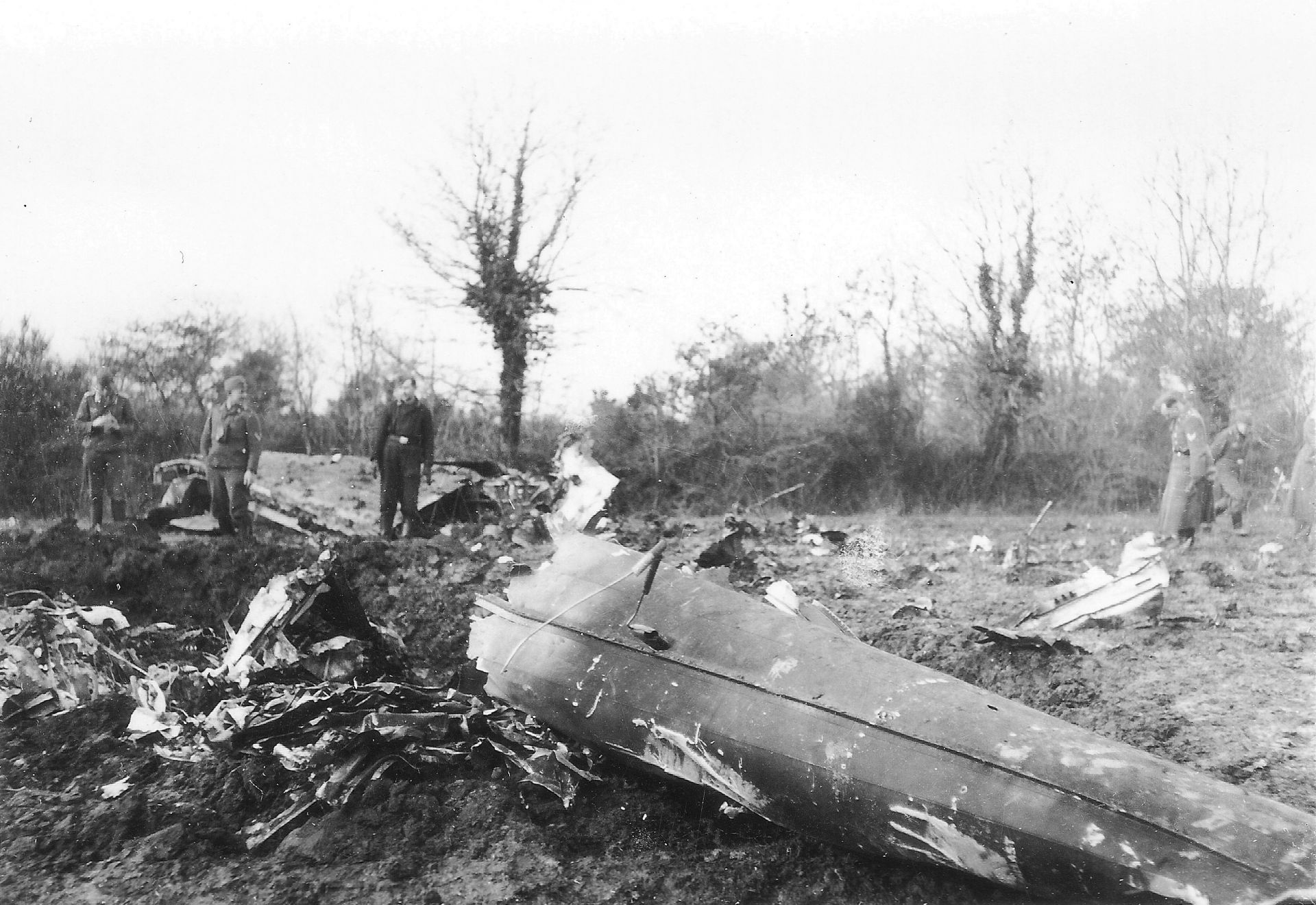
Part of the fuselage of Hampden AD750 - Photo © collection Benoit Paquet

Other part of the fuselage of Hampden AD750 - Photo © collection Jean-Louis Roba




The tail of Hampden AD750 - Photo © collection Benoit Paquet




The remains of the Hampden AD750 show the violence of the impact - Photo © collection Benoit Paquet
THE EXCAVATION OF JANUARY 18, 2011
Tuesday January 18, 2011, Pont Saint Martin, "La MarIonnière", an excavation site is planned by the team of Jérôme Batard, member at that time of the association "Les Chemins d'Herbonne" ; an excavator is then made available by the town hall of Pont Saint Martin. The site manager and his colleagues from the Nantes civil protection (mining service) give us their directives ; the field, the crash zone already defined for several months by magnetic surveys, will be staked out. After which, we will have the right to enter the area to be excavated to take photos of the site. A security perimeter of 200 meters is set up.
The mine clearance service team carries out the first bucket shots, clears a first area and assesses the risk of ammunitions in the basement ; magnetic tracking indicates the presence at medium depth of some metallic objects. There is strong suspicion of the presence of unexploded bombs in the ground. Approximately 30 minutes after digging in the area, we are invited to come to the field to search in the earth ; there is no presence of bombs. Two cylinders heads from one of the two Bristol Pegasus were found. A fire extinguisher, a charger with 7.7 mm ammunition, various scrap metal or aircraft parts were found. The excavation continues with magnetic controls and still no trace of bombs. The loot will be meager, we were hoping to find the remains of at least one engine; everything had undoubtedly been cleaned up by the occupying troops in February 1941.
♦ Some photos of the excavation (photos courtesy of Jérôme BATARD - AREA)


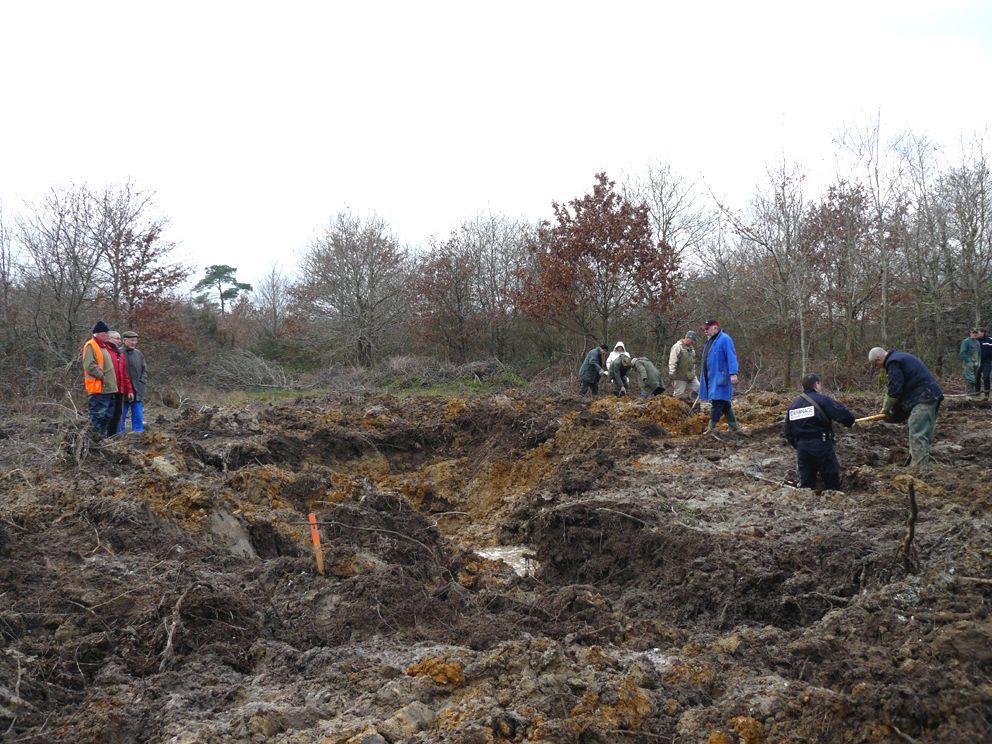

♦ Parts found on site (photos courtesy of Jérôme BATARD - AREA)


Cylinders

Pieces of plexiglas

Fire extinguisher


Oil filter




The remains of a 7.7 mm cartridges charger


Wristwatch


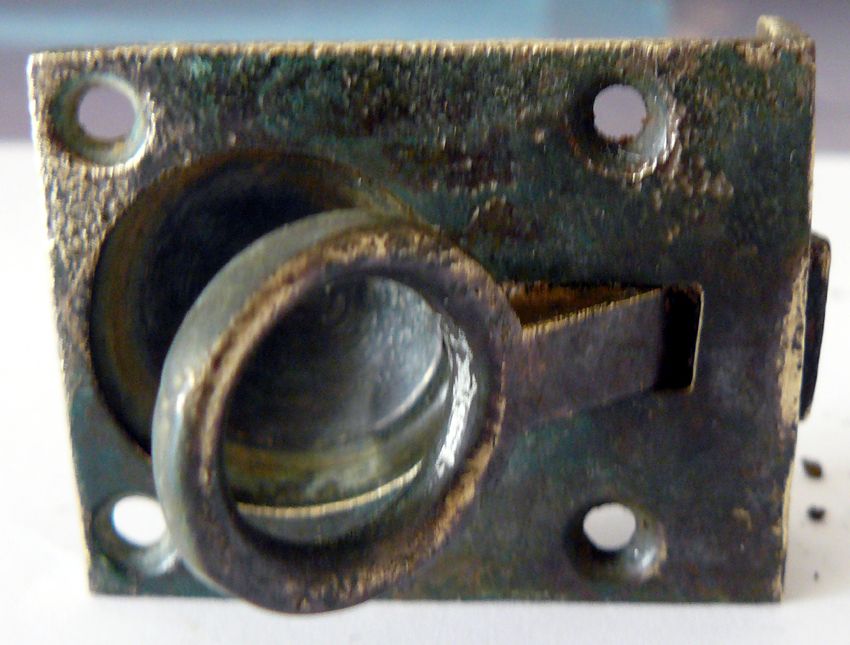
Standard lock with dimensions below (in cm)
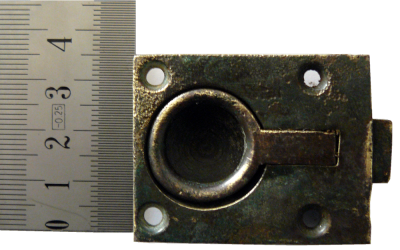



Parts of a "self" with tuning capacitors of the input stage of a low sensitivity direct amplification radio receiver
type R.1082 which served as inter-communication between nearby aircraft and as well as gonio between them.
Below is a view of the receiver, the "selfs" box and the characteristics. The “AERIAL” E "self" recovered on site is for the 6 to 7 MHz range.
It is different from the one in the photo below which is type M (marked "1") in the range 280 to 470 KHz and which has a socket in the center
for the gonio frame.
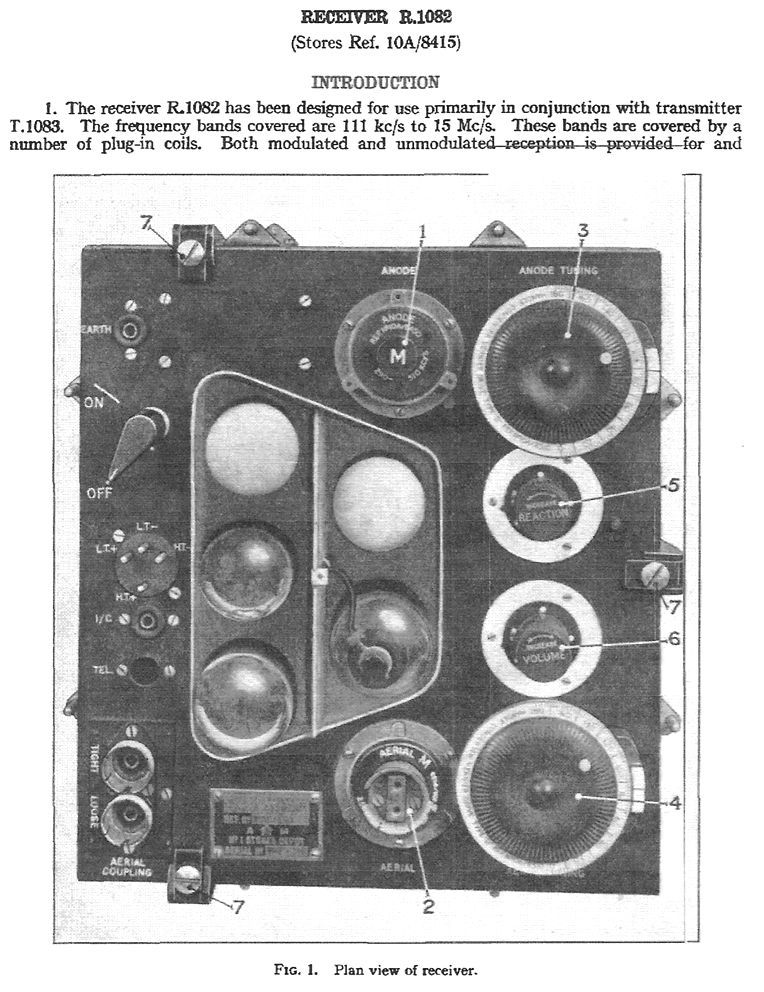


Documents and information with courtesy of André Halbeher
COMMEMORATIONS and TRIBUTES
♦ Thursday 24th March, 2011 - CM1 and CM2 classes in Pont-Saint-Martin (44)
(photos courtesy of Michel Dolcini - ABSA 39-45)
Vincent Sevellec, Pierre Mahé and Michel Dolcini (ABSA 39-45) tell the students about the sacrifice of the Hampden crew. They brought a mannequin wearing the uniform of RAF airman.










♦ Saturday 7th May, 2011 - Pont Saint-Martin (44) cemetery
(photos with courtesy AREA association)
Tribute to the crew of Handley Page Hampden AD750 fallen on 4th February, 1941 and Wellington R1374 fallen on 8th May, 1941.

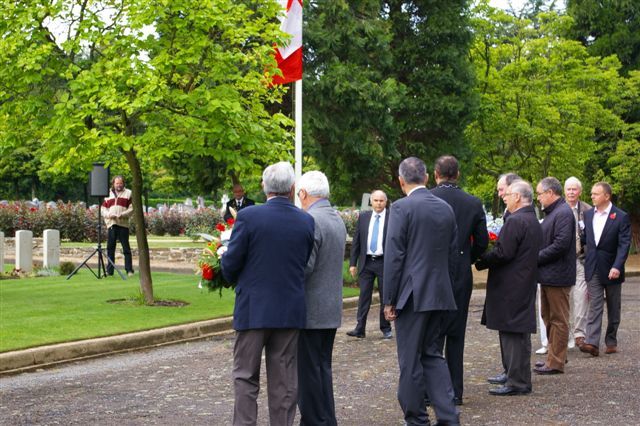
















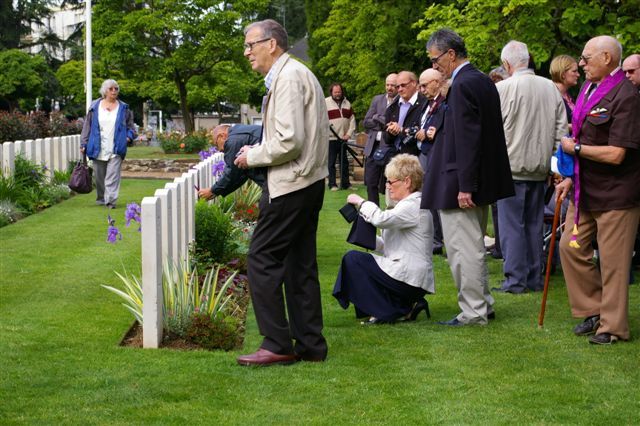





♦ Saturday 7th May, 2011 - On site of Hampden AD750 crash
(photos ABSA 39-45 Dahiot Daniel - Jean Michel Martin)
Remembrance with English families at the crash site. Father Poisson shares on this occasion his memories in English for the day of February 4, 1941
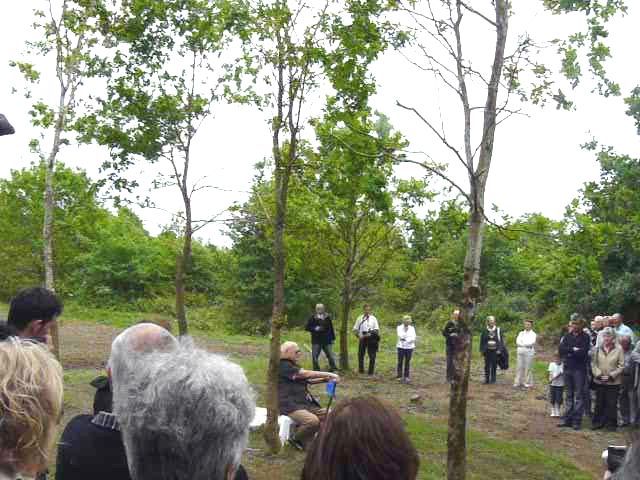



♦ Sunday 8th May, 2011 - Pont Saint Martin, Remembrance ceremony
(photos ABSA 39-45 Dahiot Daniel - Jean Michel Martin)


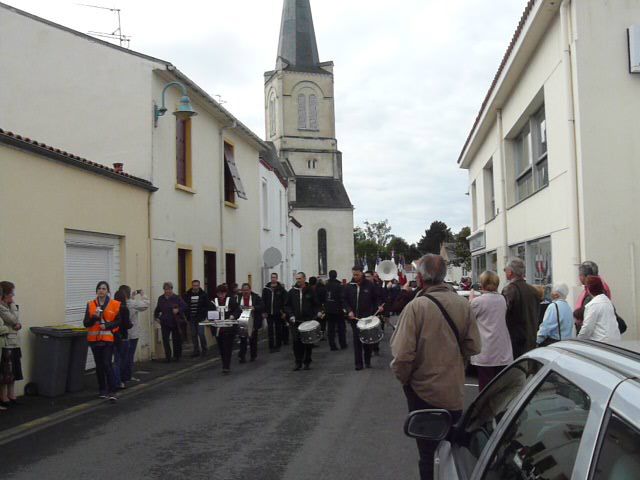
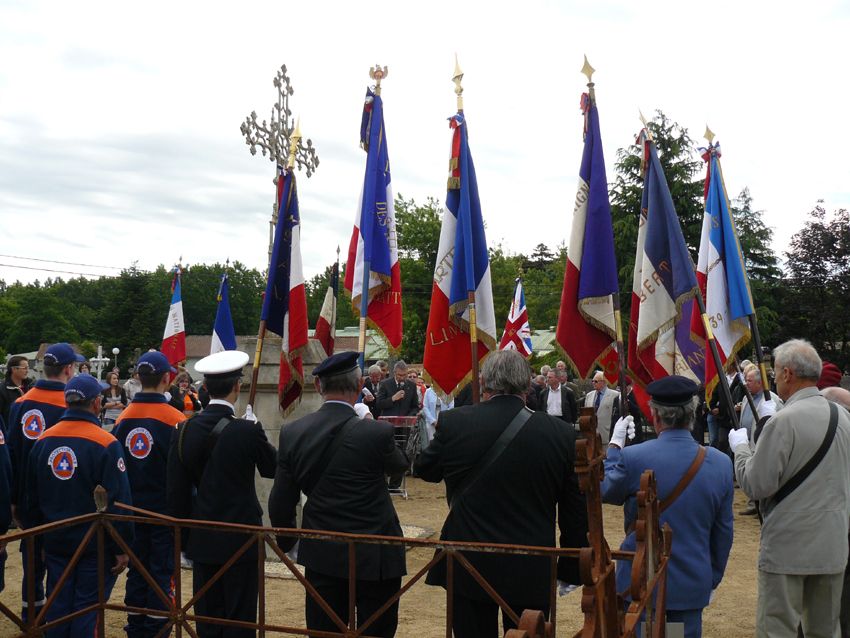


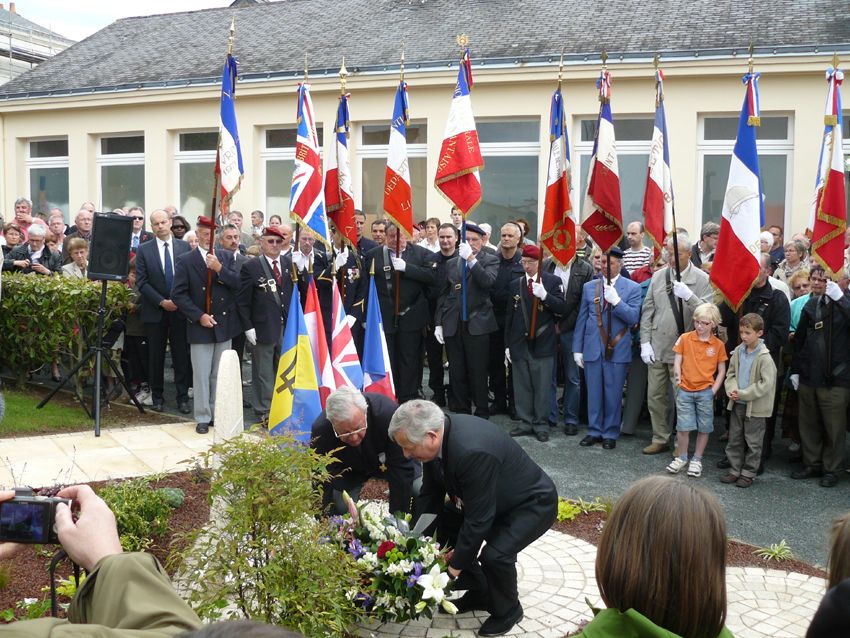













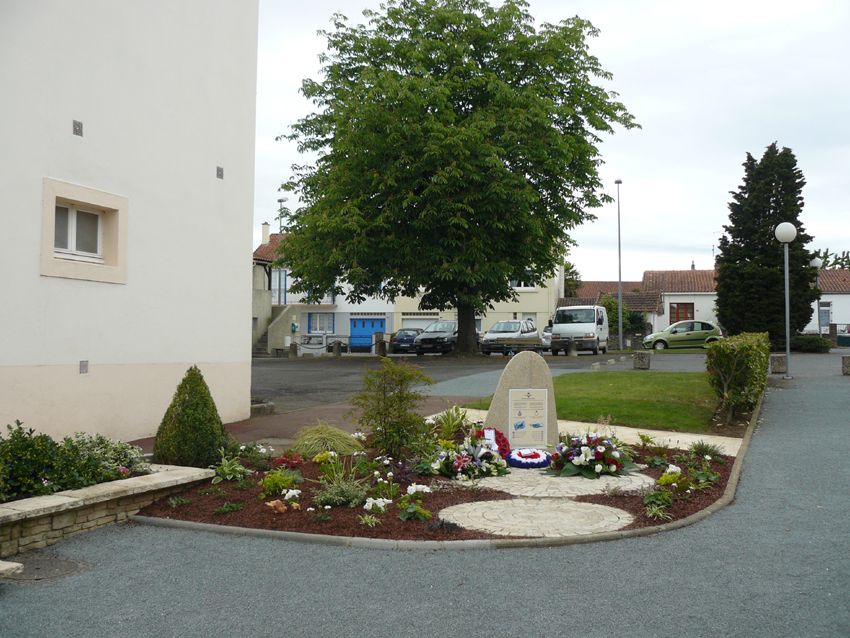







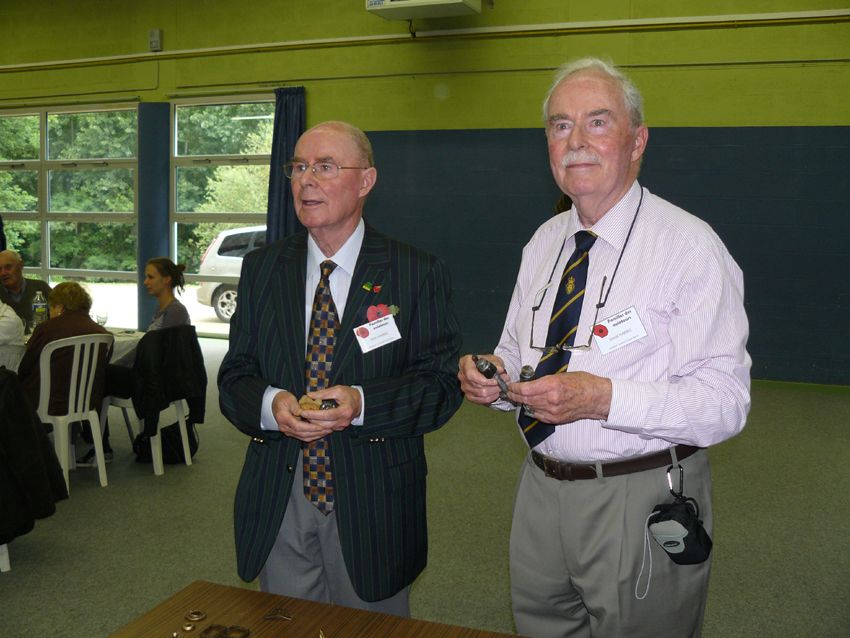


APPENDICES
♦ Mission reports of Hampden engaged in the operation with Hampden AD750
(documents source : The National Archives)
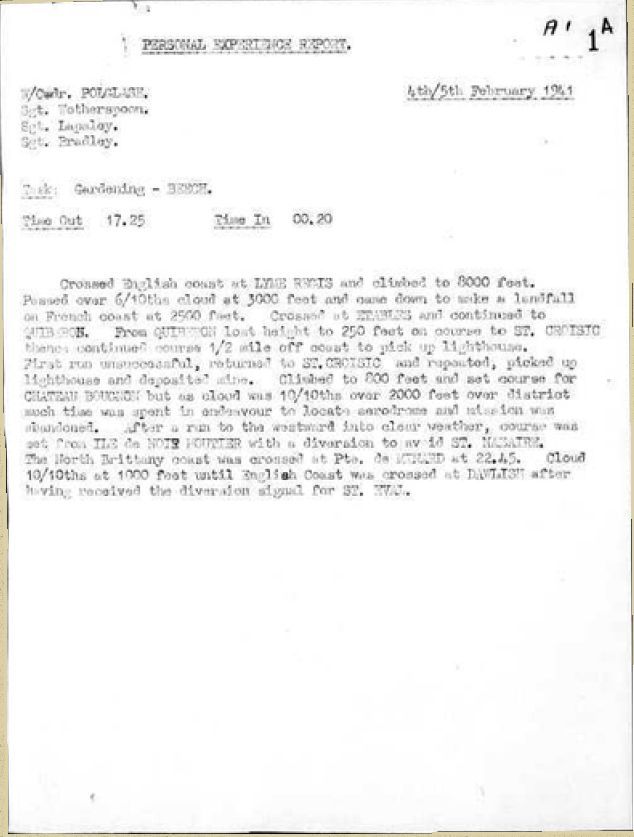
Report of Wing Commander Patrick Jullian POLGLASE

Report of Sergeant WEST

Report of Pilot Officer WAREING

Report of Sergeant OSBORNE

Report of Sergeant GALLOWAY
♦ Extracts of Operational Record Books of RAF Squadron 106 for the month of February, 1941
(documents source : The National Archives)

ORB AIR-27-832-3 Squadron 106 RAF.

ORB AIR-27-832-4 Squadron 106 RAF
It is specified for the Hampden AD750 a take off at 17.30.
It was a "Gardening operation" (mine dropping) in the "Beech" area (Saint-Nazaire).
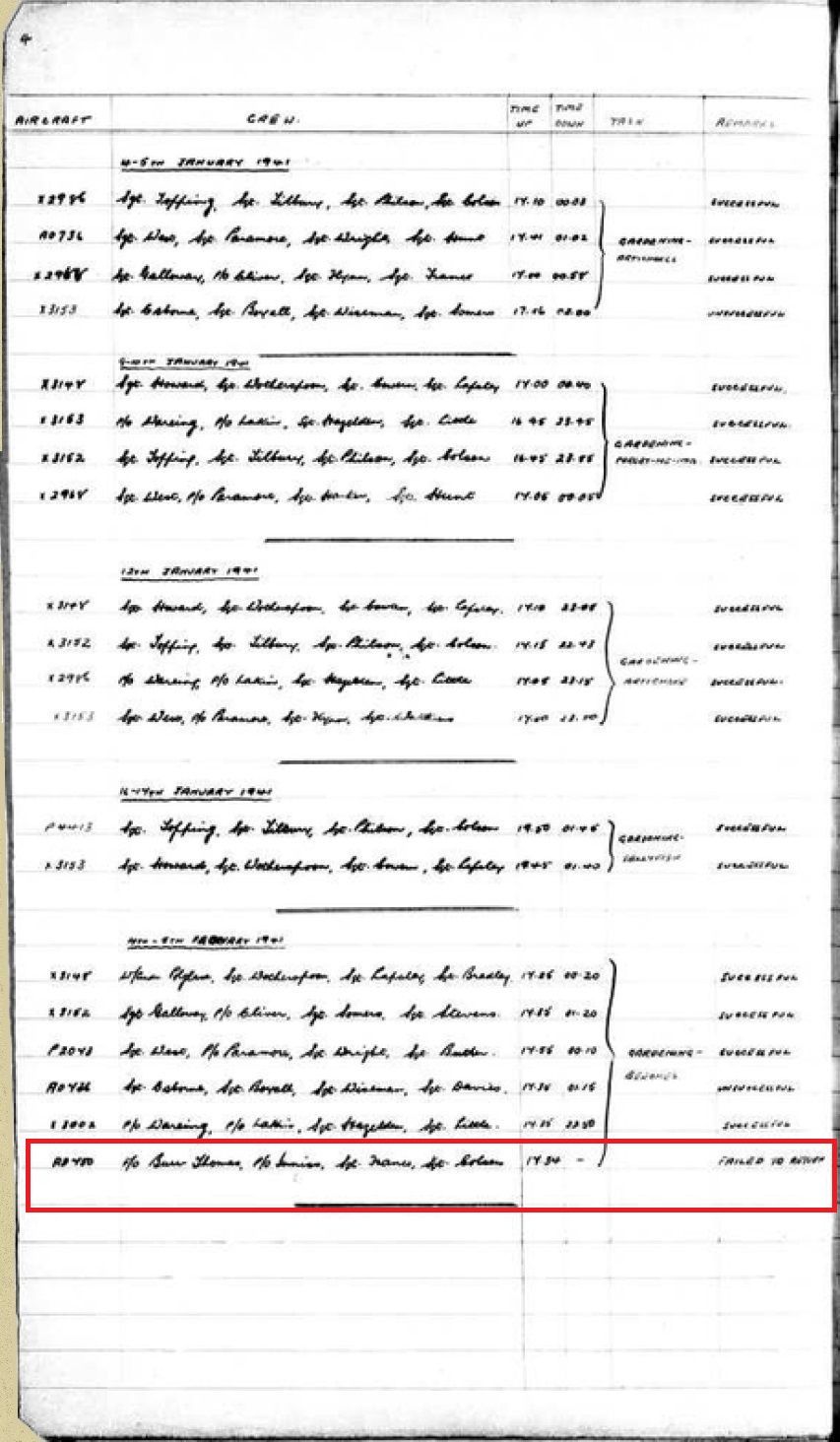
ORB AIR-27-836-01 Squadron 106 RAF
It is also specified for the Hampden AD750 a take off at 17.30.
The aircraft failed to return.
♦ Photo RAF Flying School in 1939
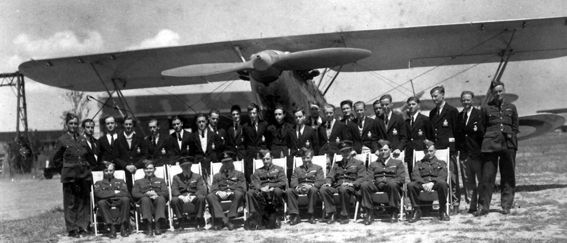
RAF Flying School in 1939. William K. B. Thomas would be on this photo (not confirmed).
Photo courtesy of Christine Buteau and Jérôme Batard (AREA Nantes)
♦ Press articles and documents in memory of George Harold Frederick INNISS
(courtesy of Inniss family via Valerie Gittens)






♦ Documents in memory of Father Poisson
(courtesy of Christine Buteau and Jérôme Batard who thank Father Poisson who kept all these documents)

For his action towards the families of airmen, Father Poisson was awarded with the wings of the RAF on June 6, 1989.


Father Poisson was also awarded with the 'Légion d'Honneur' on May 4, 2001.

Father Poisson wears RAF wings.


Ajouter un commentaire